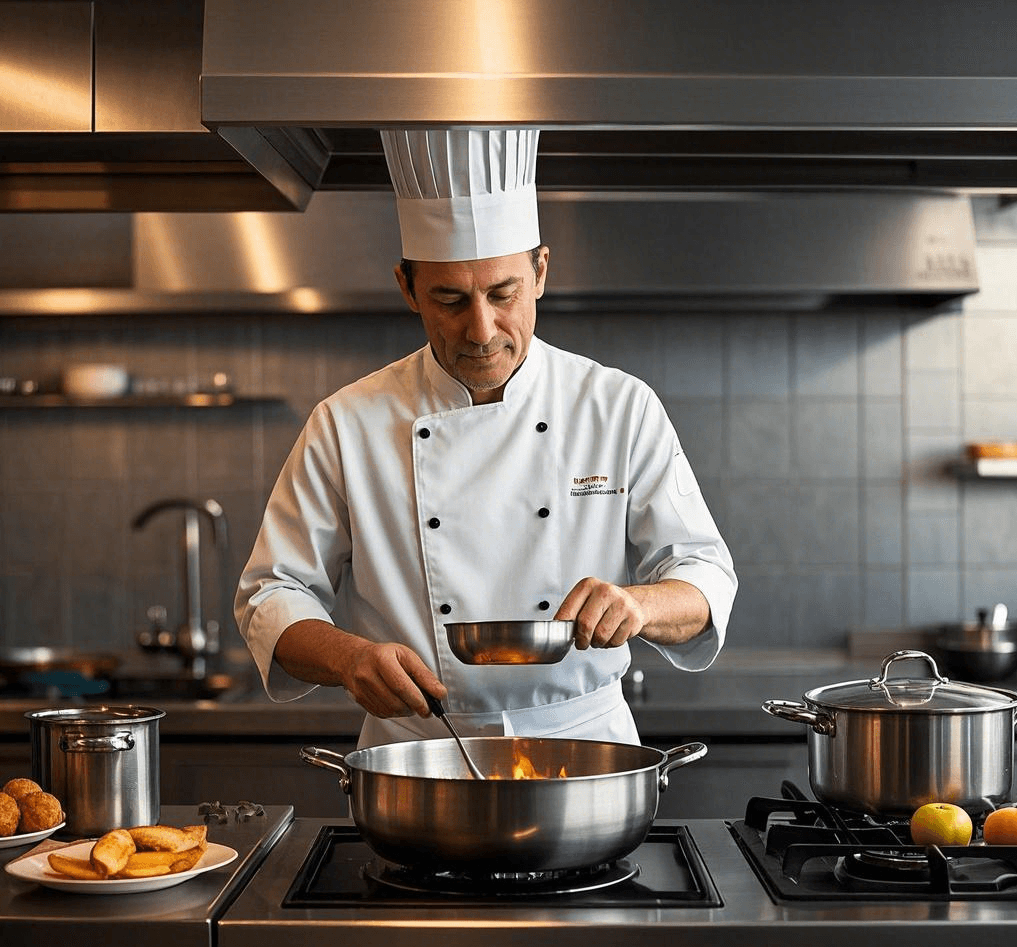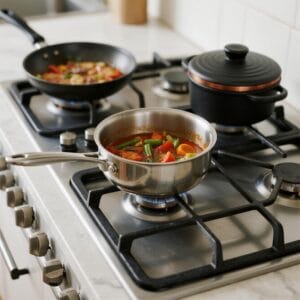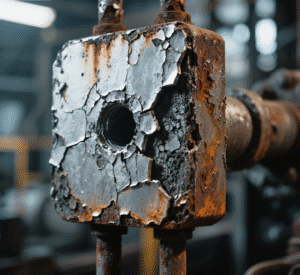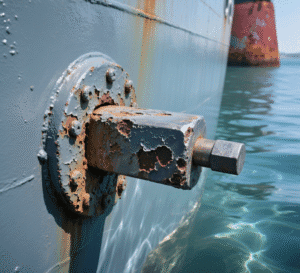Are you worried about what your cookware is made of? Concerned that harmful materials might get into your food? Let’s look at why tri-ply stainless steel is a trustworthy option.
Yes, tri-ply stainless steel cookware is considered very safe for your health. It uses food-grade, non-reactive stainless steel for cooking surfaces and doesn’t rely on chemical coatings, ensuring no harmful substances leach into your food.
From my years in the kitchenware industry—and as someone who’s used tri-ply cookware daily for over a decade—I can confidently say it’s safe and reliable. I’ve worked with many food-contact materials, and health always comes first. Tri-ply meets high safety standards, which is why I trust it for my family and recommend it to clients worldwide. Let’s break down the specifics.
Is tri ply cookware non-toxic?
Heard worries about toxins from certain pans? Afraid coatings might break down over time? Tri-ply offers peace of mind with its solid, stable construction.
Absolutely, tri-ply cookware is non-toxic. The food-grade stainless steel layers are stable, non-reactive, and don’t release harmful chemicals, even when cooking acidic foods or using high heat.
Understanding Tri-Ply’s Non-Toxic Nature
The safety of tri-ply comes from its smart design and material choice. Here’s why it’s considered non-toxic:
- Stable Materials: The inner cooking layer is typically 304 stainless steel (also known as 18/8 or 18/10), a food-grade material known for its stability . It doesn’t break down or release harmful substances.
- Non-Reactivity: This stainless steel surface doesn’t react with acidic ingredients like tomatoes, lemon juice, or vinegar [^4]. Your food tastes like it should, without any metallic flavour or leached elements.
- No Chemical Coatings: Unlike many non-stick pans that rely on synthetic coatings (which can degrade or release fumes if scratched or overheated), tri-ply has a solid steel surface [^6]. There’s no coating to peel or worry about.
- High Heat Safety: Tri-ply cookware handles high cooking temperatures safely without warping or compromising the material’s integrity .
As someone who supplies tri-ply circles to manufacturers, I know the quality standards these materials meet. It’s designed for performance and safety.
Which is healthier, triply or stainless steel?
Trying to pick between tri-ply and standard stainless steel? Wondering if one has a health advantage over the other? Let’s clear up any confusion.
Both high-quality tri-ply and single-layer stainless steel cookware are equally healthy choices. The safety comes from the food-grade stainless steel itself, which both types use for the cooking surface.
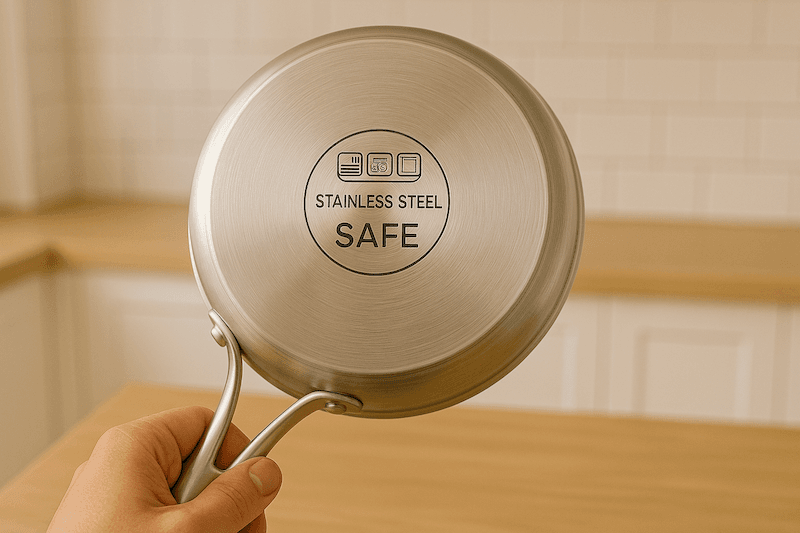
Health Safety: A Shared Trait
When it comes to health, the key factor is the material touching your food.
- Shared Material: Both premium single-layer stainless steel pans and tri-ply pans typically use 304 (18/8 or 18/10) stainless steel for the interior. This material is chosen specifically for its safety, non-reactivity, and corrosion resistance.
- Aluminum Core: In tri-ply, the aluminum core is safely sandwiched between stainless steel layers. It improves heat distribution but never comes into contact with your food. So, it doesn’t introduce any health risks.
- Performance vs. Health: The difference between tri-ply and standard stainless steel is mainly about cooking performance (heat conduction) and sometimes cost and weight, not health safety. Tri-ply offers better heating, but a good quality single-layer stainless steel pan is just as safe health-wise.
So, you don’t need to choose based on which is healthier—they both excel here. Base your decision on cooking needs and budget. I personally prefer tri-ply for its cooking advantages, knowing the health aspect is equally strong in both.
What is the safest healthiest cookware to use?
Looking for the absolute best options for safe cooking? Feeling lost with all the different materials available? Let’s focus on the top choices for health.
High-quality stainless steel (including tri-ply), glass, and 100% ceramic are generally considered the safest and healthiest cookware materials due to their stability and non-reactive properties . Cast iron is also a safe option.

Top Choices for Healthy Kitchens
Choosing safe cookware means picking materials that won’t leach harmful substances into your food. Here are the leading options:
| Material | Pros | Cons | Health Notes |
|---|---|---|---|
| Stainless Steel (incl. Tri-Ply) | Durable, non-reactive, versatile, easy to clean | ||
| Glass | Completely inert, non-reactive, see-through | Fragile, thermal shock risk, not usually for stovetop | Extremely safe, no leaching |
| 100% Ceramic | Natural materials, non-reactive | Can be expensive, potentially fragile, variable quality | Very safe if genuinely 100% ceramic |
| Cast Iron | Extremely durable, develops non-stick, holds heat | Heavy, requires seasoning, can rust, leaches iron | Generally safe, iron leaching can be beneficial |
| Carbon Steel | Durable, heats quickly, lighter than cast iron | Requires seasoning, can rust | Safe, similar properties to cast iron |
Materials like untreated aluminum (can react with acids) and non-stick coatings (potential for breakdown/fumes) require more caution.
Do I need to worry about nickel in stainless steel?
Heard concerns about nickel in stainless steel cookware? Wondering if it poses a health risk during cooking? Let’s address this common question directly.
For most people, nickel in food-grade stainless steel (like 304/18/10) is not a concern. Leaching is minimal, and the nickel content enhances durability and corrosion resistance. Only those with severe nickel allergies might need to consider alternatives.
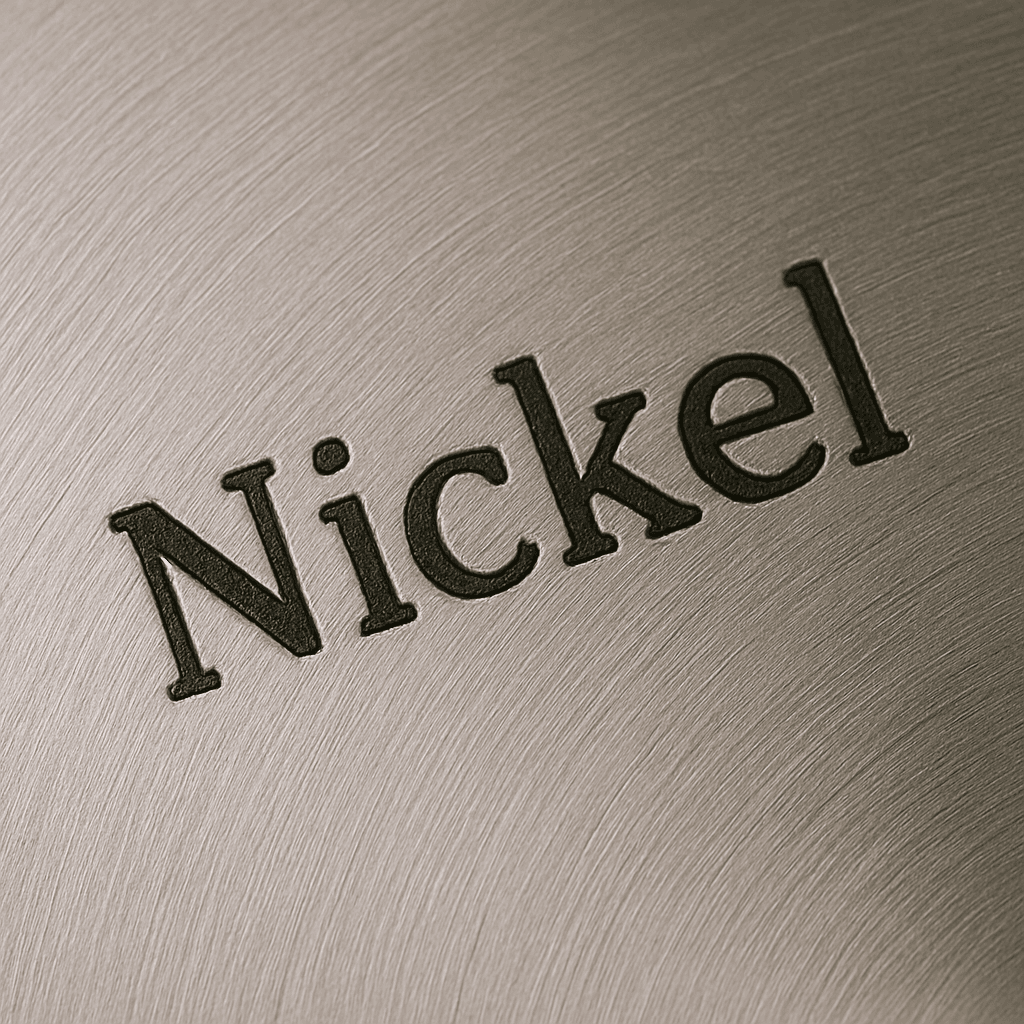
Nickel’s Role and Safety
Understanding why nickel is used helps clarify the safety aspect:
- Why Nickel? In common food-grade stainless steels like 18/8 or 18/10, the ‘8’ or ’10’ refers to the percentage of nickel. Nickel is added to improve the steel’s resistance to rust and corrosion, especially from acids and salts, and makes it more durable .
- Low Leaching: High-quality stainless steel is very stable. While trace amounts of nickel (and chromium) might leach, especially with new pans or when cooking very acidic foods for long periods, studies show these levels are generally far below harmful amounts for the average person .
- Nickel Sensitivity: A small percentage of the population has a nickel allergy, often manifesting as skin reactions (contact dermatitis). While systemic reactions from dietary nickel are possible, significant leaching from quality stainless steel cookware is unlikely to cause issues for most sensitive individuals.
However, those with severe, diagnosed allergies might prefer nickel-free options like ferritic stainless steel (e.g., 430), glass, or ceramic. - Regulatory Acceptance: Food-grade stainless steels containing nickel are widely approved and used globally for food processing and cookware due to their overall safety and stability .
I’ve sold and used 18/10 stainless steel materials for years without issue. For the vast majority, it’s a safe and reliable material.
Conclusion
Tri-ply stainless steel is a safe, non-toxic, and healthy choice for your kitchen. Its stable materials and lack of chemical coatings provide peace of mind for everyday cooking.

